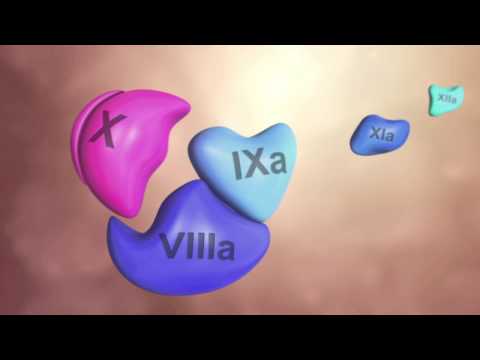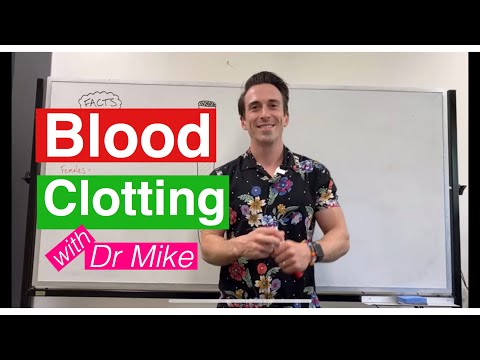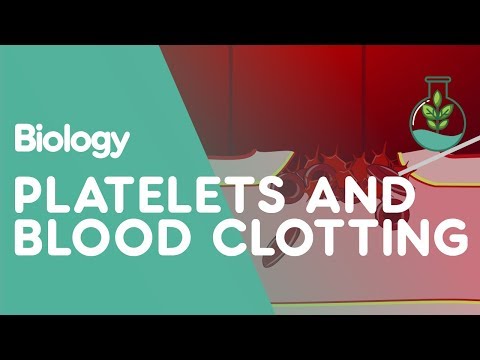When you’re hitting the weights, pushing your limits, and striving for that chiseled physique, remember that your body is a highly sophisticated machine. One important yet often overlooked aspect is the coagulation process. That’s right, folks! Learning how our bodies coagulate is vital, not just for athletes but for anyone who’s interested in healing and recovery. When we get injured, our body kicks into action, working tirelessly to clot our blood and initiate the healing process, and understanding these mechanisms can help you recover faster and get back to training.

The Science of Coagulation: Key Components and Processes
The Coagulation Cascade Explained
Let’s break it down: the coagulation cascade is a multi-stage process that’s like an intricate dance. When a blood vessel gets hurt, platelets spring into action, clumping together at the injury site. Imagine this as a mini cast forming right where you need it! Key players like fibrinogen, a type of protein, and thrombin, an enzyme, play vital roles in this cascade. Fibrinogen turns into fibrin, which weaves into a sticky mesh that traps red blood cells and creates a solid clot. This process is quick and efficient, transforming a small rupture into a fortified area, allowing for tissue repair.
Natural vs. Synthetic Factors
Now, let’s talk about how your body naturally handles blood clotting versus what happens in medical settings. Natural clotting factors, such as Factor VIII and Factor V, work seamlessly together, while synthetic alternatives like NovoSeven (recombinant factor VIIa) are life-savers for hemophilia patients who can’t form clots properly. These synthetic agents mimic the body’s natural processes, stepping in to assist when the body falters. It’s like having an extra set of hands when you’re in a pinch—who wouldn’t want that?

Top 5 Insights into How Coagulation Affects Healing
1. Coagulate for Initial Response
When you’re injured, your body’s first response is to clot the blood. It’s lightning-fast! As platelets rush to the scene, they release substances that signal other platelets to join the party. This quick aggregation forms the initial clot that stops bleeding and starts tissue repair. It’s the body’s immediate defense mechanism, much like your trusty gym buddy spotting you during an intense lift!
2. Inflammatory Response Interplay
But hold on, it’s not just about getting that initial clot down. The coagulation cascade also launches an inflammatory response! This step is crucial for healing. Cytokines, which are signaling proteins, are released, helping to bring other immune cells to the site to clean up debris and fight infection. This inflammatory phase is crucial for the next steps in your healing journey. It’s like getting your gym nutrition dialed in just right to rebuild those damaged muscles.
3. Coagulation Disorders
Let’s shine a light on coagulation disorders, such as Hemophilia A and Von Willebrand disease. These conditions can severely impact one’s ability to heal since the body struggles to form adequate clots. This can lead to excessive bleeding and prolonged recovery times. Fortunately, exciting innovations in gene therapy are on the horizon and could reshape treatment approaches. We’re talking about groundbreaking solutions that might make those disorders a thing of the past!
4. Diet and Coagulation
What you eat matters! Studies show that Vitamin K and omega-3 fatty acids play a substantial role in how we coagulate. Vitamin K, found in leafy greens, helps our bodies produce clotting factors, while omega-3s can actually reduce excessive clot formation. Think about incorporating the Mediterranean diet, chock-full of these nutrients, compared to a typical Western diet high in processed foods. The former may support quicker healing—so why not fuel your workouts with the best ingredients?
5. The Future of Coagulation Management
Recent strides in anticoagulant medications are changing the game. Direct oral anticoagulants (DOACs) such as apixaban and rivaroxaban show promise in preventing clots without the extensive monitoring required by older drugs like warfarin. These medications allow for better compliance, keeping your training regimen on track while managing your blood’s ability to clot safely. It’s about time we embraced innovations that enhance our personal journeys to health!

Coagulation Technologies: Innovations Shaping Tomorrow’s Healing
Point-of-Care Testing
Technology is making waves in healthcare, too. With devices like the CoaguChek system, patients can monitor their own coagulation levels right at home. Imagine easily keeping track of your blood’s clotting abilities, allowing for personal adjustments and a more tailored approach to healing. This capability leads to better management of clotting disorders and can streamline recovery times, keeping you on your path to greatness!
Biotechnology and Coagulation
Biotech firms are pioneering new treatments that-zero in on specific pathways in the coagulation cascade. These next-gen agents offer potential solutions for anyone recovering from injuries. Think about it: faster healing, improved recovery, and better performance! That’s exactly what you want as you crush those last reps in the gym. It’s practically a cheat code for recovery!

The Interconnectedness of Coagulation and Health
Mental Wellbeing and Healing
Don’t underestimate the mind-body connection. Stress can impact your body’s ability to coagulate properly; high levels of anxiety may interfere with the healing process. This connection highlights how mental relaxation, like mindfulness or yoga, can enhance recovery. Make time to unwind; it’s just as crucial as those lift days in the gym!
Lifestyle Choices for Optimal Coagulation
Practicing good lifestyle habits can naturally improve your body’s coagulation processes. Staying hydrated, for instance, is crucial for blood volume and circulation. Don’t overlook proper exercise—regular activity keeps your vascular system in prime condition. Combine that with stress management techniques, and you’re laying a solid foundation for optimal health and recovery readiness!

Embracing the Future of Coagulation and Healing
Exploring the world of blood coagulation reveals the sheer brilliance of our bodies and the innovations on the horizon. Understanding the mechanisms of the coagulation cascade empowers us to make better choices about our health, enabling improved recovery times and overall wellness. By staying educated and adapting new knowledge into our lives, we bolster our ability to heal and thrive.
So, gear up, stay informed, and push through! Just like in every set, every rep counts, and every piece of knowledge is another step towards achieving that ripped six-pack you desire. Now get out there and crush your goals!
Coagulate: Fascinating Facts About Blood Clotting
The Wonders of Coagulation
Did you know that your body has its very own defense system to prevent excessive bleeding? When you get a cut, your blood starts to coagulate, forming clots that can staunch the flow and allow for healing. It’s fascinating to think about how intricate these processes are, much like how stitch Wallpapers can add layers of design to a room. Just as those wallpapers come in various styles, the clotting mechanisms showcase a diversity of proteins and cells working together. This teamwork helps maintain health, allowing injuries to heal more quickly.
Hidden Trivia That Stitches Together Facts
While blood clotting might seem straightforward, there’s still a lot to learn. For instance, have you ever pondered How many Calories do I burn a day when you’re simply healing from a minor injury? Believe it or not, your body ramps up the calorie burn as it works to repair and rejuvenate damaged tissues! And here’s a quirky tidbit: the auditory tube, often ignored in discussions about health, plays a role in balancing pressure and can affect your healing process, particularly in the realm of infections or complications.
Health Connections
If you think about it, blood coagulation isn’t just about cuts; it’s tied to broader health issues like cervicitis. This condition can lead to inflammation and affect blood flow in unique ways. Intriguingly, some people even experience a phobia Of Holes, known as trypophobia, which can heighten anxiety related to any injury—talk about a curious overlap! Healing often has psychological components that people might not consider.
So, whether it’s life lessons from films like Harold And Kumar guantanamo bay — which blur the lines between comedy and real-life situations — or contemplating How tall Was Jeffrey dahmer in societal contexts, the processes of healing and coagulate don’t exist in a vacuum. They intertwine with various aspects of life, showcasing just how interconnected our experiences can be. Ultimately, understanding the intricacies of coagulation not only sheds light on our body’s miraculous abilities but also integrates surprisingly diverse elements of daily life.



























